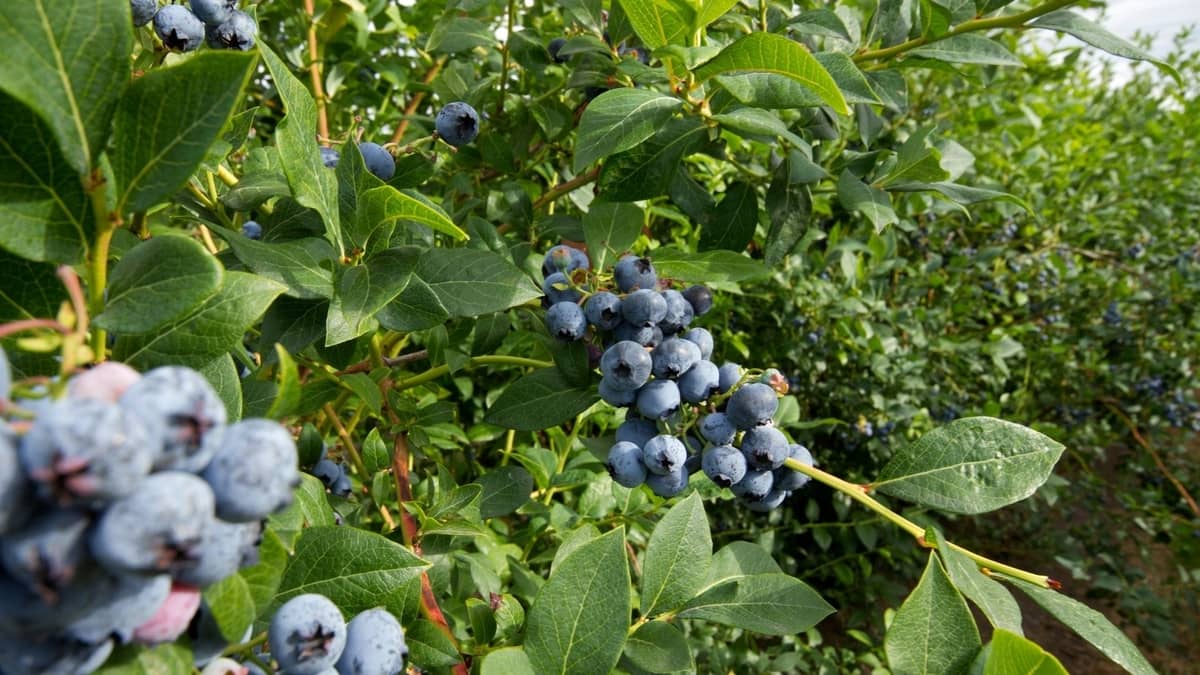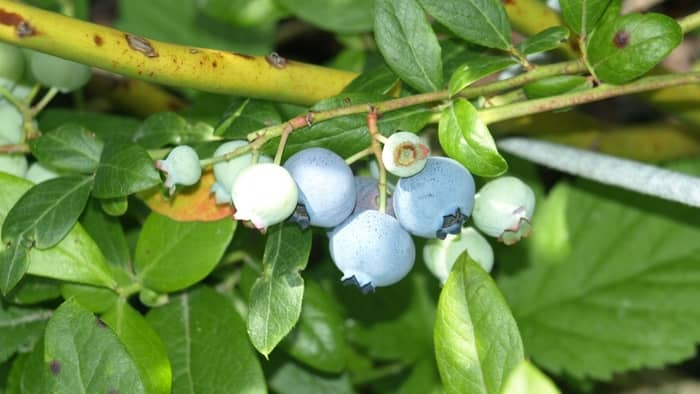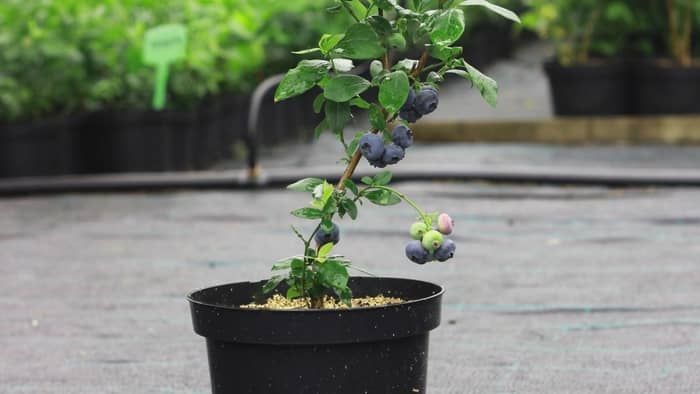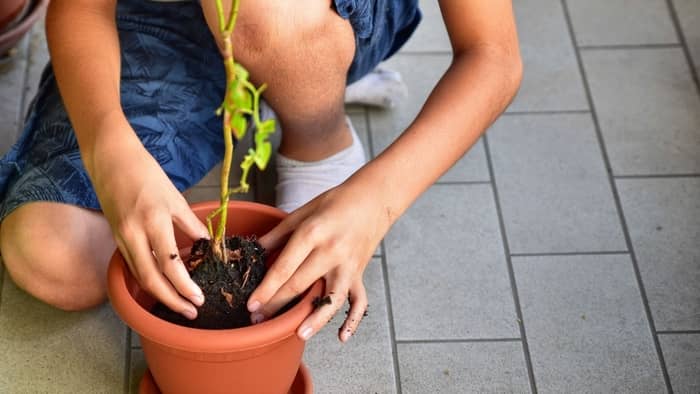Last Updated on November 27, 2021 by Guillermina
You don’t like frozen or store-bought blueberries? We have a solution just for you, read our guide to growing blueberry plants indoors.
Blueberries are a super popular treat around the world. They taste sweet and are succulent and nutritious. However, harsh winter conditions do not support perennials, so growing blueberry plants indoors seems like a good idea. In this way, they become a houseplant that bears fruit year-round.
They are suitable for everyone, whether you are an experienced gardener or just a beginner. Furthermore, they are very easy to maintain and often reward you with delicious fruits (with the right conditions).
Keep reading to learn how to achieve the best conditions for its overwintering and the best harvest ever.
Appearance & Health Benefits
The blueberry bush (Vaccinium sect. Cyanococcus) is a shrub that yields bluish/purple berries, better known as blueberries. They are small, only 0.2–0.6 inches (5–16 millimeters) in diameter. When they first appear, they are green in color, which becomes deeper (blue or purple) as they mature.
Numerous studies have recently been done that have confirmed that blueberries are strongly associated with a variety of health benefits. Therefore, for blueberries, we say that they:
- maintain bone and joints structure and strength,
- support to the skin system (smoothes wrinkles and improves the overall texture of the skin),
- maintain blood pressure at a healthy level,
- reduce the risk of type 2 diabetes,
- improve heart health (reduce the total amount of cholesterol in the blood and the risk of heart disease),
- prevent the formation of cancer cells,
- improve mental health,
- promote healthy digestion.
How To Grow Blueberries Indoors
These are the simplest guidelines for growing blueberry plants indoors.
Choosing A Variety
The most important thing is to choose the ideal variety for you. Although there are many types, it would be best to opt for “lowbrush” or “dwarf” varieties.
They tend to grow smaller, which is a great thing when growing blueberries inside. This means you can grow them in smaller pots and will not take up much space in your living room. The most popular are:
Top Hat – an indoor blueberry bush that reaches a height of 24 inches. It likes a warmer climate.
Northsky – a lowbush blueberry that reaches a height of only 18 inches. It likes a colder climate.
Northblue- a lowbush blueberry that takes up a little more space. It reaches about 40 inches, but yields more than most other dwarf varieties.
Sunshine Blue – a semi-dwarf variety that reaches a height of 48 inches.
Whichever you choose, each is a great choice for growing indoors.
Container & Soil
As for the soil, blueberries prefer acidic soil, with a pH between 4.0 and 5.0. Don’t try to plant in normal garden soil as this will negatively affect their ability to bear healthy fruit. Therefore, it would be good to look for acidic soil to provide a suitable growing environment for your plant. You can even add a little peat moss to the soil to adjust the soil PH accordingly.
Light
Blueberries grow best when they get a full 6-8 hours of sunlight a day. Make sure your indoor blueberry bush is placed in front of a window, preferably with western exposure. You can use artificial light (LED grow light) for gloomy and rainy days. Lack of light will prevent the plant from bearing fruit.
Water
Blueberries don’t tolerate dry soil. Therefore, try to water them regularly, but make sure the soil is evenly moist but not too damp. As for drainage, to make sure that the soil will not retain too much water afterward, you can add an inch or two of small pebbles to the bottom of the pot.
How to recognize that it is time to water? – With a simple finger test. Put your finger in the soil, if you feel the top is dry, it’s time for watering. Generally check the soil every few days as they are very sensitive to water levels. Try to practice frequent but small waterings.
Temperature & Hibernation
While this is not the case with all blueberries inside, the vast majority of them like a few months of lower temperatures. Therefore, it would not be worse to allow them to do so for their full and healthy development. Lowbush varieties almost always prefer colder climates.
Furthermore, while growing blueberry plants indoors during the winter, it’s advisable to keep them in cooler rooms. Even your garage will be quite a decent place to spend the winter. However, keep an eye on them and check things out well, as not all varieties enjoy the same degree of coldness.
Fertilization & Pollination
As for fertilization, only the first year of overwintering inside differs from all the others that follow. So, just the first year, try to feed your blueberry bush every few months and let it be some acidic organic fertilizer. Cottonseed meal or feather meal will do a great job.
Pollination is another thing you need to pay attention to. If you want your blueberries to bear fruit, you must allow them to pollinate properly. Therefore, try to grow at least two different varieties of blueberries close to each other.
Since you are growing blueberry plants indoors, unfortunately, there will be no wind pollination, as would be the case if it grows in nature. Therefore, try to take pollen from one plant (with a q-tip) and take it into another. This will allow them to properly pollinate and will result in high fruit yields.
Pruning
Don’t forget about autumn pruning, it is best to do it after you have harvested all your berries for the season. Pruning is done by removing all weak, dead, and low-hanging branches, as well as older canes.
Sweet Harvest
If you got to this part, all your effort paid off. Since not all clusters ripen at the same time, it would be best to pick them when they are completely blue.
In Conclusion
This sweet-tasting fruit known for its numerous health benefits is very easy to grow indoors and in containers. Include it in your diet to protect your family and yourself from heart disease and cancer, as well as to maintain bone strength, mental health, and healthy blood pressure.
If you have any feedback or questions about growing blueberry plants indoors, let us know in the comments below.
You may also be interested in Top Secret In Growing Clementine Trees Indoors





